|
Upcoming Chapter Events:
| |
REGISTER TODAY!
Click the links below for more information
***
APWA
Chapter Awards Program
Calling for Nominations!
Deadline: January 15, 2021
APWA's Mid-Atlantic Chapter Awards Program recognizes outstanding individuals and groups representing the best achievements in the Public Works profession in our Chapter.
Click More Information and Applications
***
|
|
|
SPECIAL THANKS
To Our
Newsletter Sponsors!
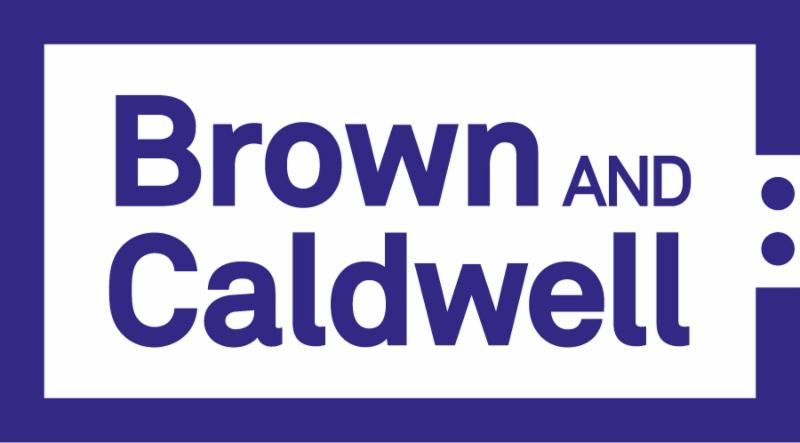 |
|
2020-2021
OFFICERS/DIRECTORS
President
Phillip J. Koetter, P.E.
Operations Management Administrator
Department of Public Works
City of Virginia Beach, Virginia
President-Elect
Scott A. Smith, P.E., L.S.
Senior Civil Engineer
City of Hampton, Virginia
Immediate Past-President
Don Cole, ENV SP
Vice President
Brown and Caldwell
Virginia Beach, Virginia
Steven J. Yob, P.E.
County Eng/Director PW
Henrico County, Virginia
Vice-President
Harold Caples, P.E.
Asst. State Construction Engineer
Virginia Department of Transportation
Richmond, Virginia
Secretary
Amy Linderman, P.E.
Fairfax County Park Authority
Fairfax County, Virginia
Treasurer
David Bradshaw, P.E.
Principal
Clark Nexsen
Virginia Beach, Virginia
Chapter Delegate
Judith L. Hines
Assistant Director of Public Works
City of Newport News, Virginia
Historian
Dawn V. Odom
Retired
Suffolk, Virginia
Directors
David Bradshaw
Principal
Clark Nexsen
Jennifer Caples Marketing & Business Development
Whitman, Requardt & Associates, LLP
Richmond, Virginia
Sherry B. Earley, P.E.
Senior Project Manager - Transportation
Clark Nexsen
Virginia Beach, Virginia
Gaynelle L. Hart
Director of Public Works
City of Lynchburg, Virginia
Mark Jamison, PE
Transportation Division Manager
City of Roanoke, Virginia
Ryn Kennedy
Stormwater Facility Specialist
Henrico County, Virginia
Joe Kroboth, III, P.E., L.S., PWLF
Director, Transp. and Cap. Infrastructure
Loudoun County, Virginia
James W. Long, III, P.E., DBIA
Project Manager, Transportation
Rummel, Klepper & Kahl, LLP
Virginia Beach, Virginia
Kelly Mattingly, LEED-AP, CRM
Director of Public Works
Town of Blacksburg, Virginia
Denise Nelson, P.E., CFM, ENV SP, LEED AP
Environmental Engineer
The Berkley Group
Juan Reyes
Assistant Director of Public Works
Fairfax County, VA
|
|
|
|
President's Corner 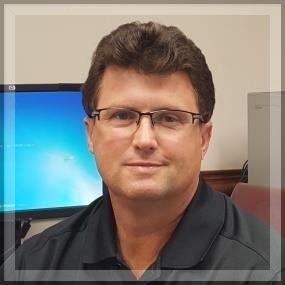
By Phillip Koetter, Operations Engineer,
City of Virginia Beach
Friends:
As I begin this year's holiday message to you all, I pray that you and your families and loved ones are well. In what may be the understatement of the year - this has been QUITE a year for ALL of us. Each month of 2020 had us wondering if it would ever end, while looking for ways to cope and adapt - both on a daily basis and virtually. We did learn to gather with so many of our co-workers and friends without leaving our living room or struggling with rush hour traffic (See? SOME good things happened!)
This week we have begun to see the vaccine make its way to distribution locations throughout the country which gives us hope that 2021 will bring us a better and brighter year. To put it another way, let's hope that this light at the end of the tunnel not be another train headed towards us!
As true APWA professionals always do, we have learned to adapt and move forward without missing a beat.
While there are always the unknowns we must deal with, I believe it is vital that we focus on 2021 and our challenges and responsibilities. I am sad to say that we do not plan to hold an on-site conference in May of 2021 in Virginia Beach due to the continued uncertainty in gatherings and the current budget outlooks. Our conference committee is evaluating what possible options we might offer so as to provide you virtual training throughout the year. Though we may not come together in person this spring for our usual fellowship, networking, and training, we will again in the not-to-distant future.
I hope everyone had a chance to see the call for Chapter Awards in our Chapter Works Weekly; if not, please go to the chapter web site or click here For More Information and Applications. The deadline is fast approaching (JANUARY 15, 2021), so don't miss this opportunity to show your employees that you recognize their hard work during these difficult times and their efforts to go above and beyond what is needed. Although we may not gather in person, we still want to recognize their great efforts and all that they are accomplishing. 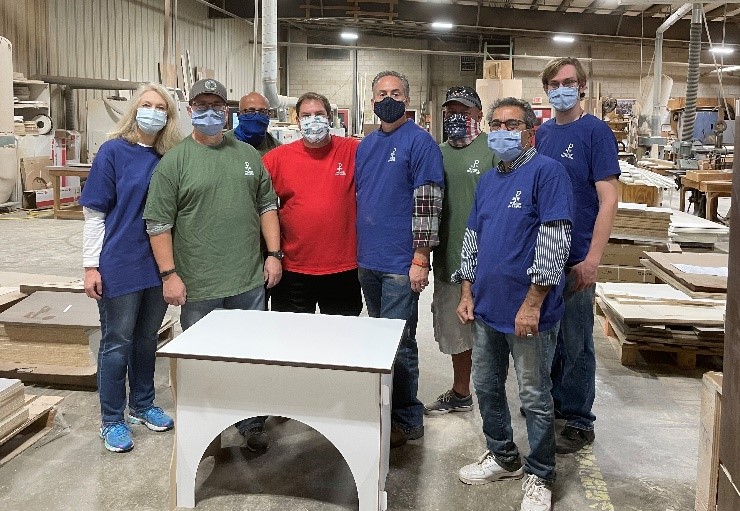 Lastly, I want to take this opportunity to thank all those selfless APWA members and their families who came out in November to help us with our project for making needed desks for local school children in need. Times are tough for educators and students during this time, so we are glad to tackle any project that can help students as they cope with the struggles of virtual learning.
The VERY generous folks at Premier Millworks and Lumber and the Children's Health Investment Program of South Hampton Roads have provided over 1500 desks FREE of charge. The APWA team showed up early and worked until the day's target of 200 desks were packaged and ready for delivery. The APWA Mid-Atlantic Chapter members and family helped to sand, clean, prepare, and package the desks. This hardworking team included (right to left); Wesley Mundy, Mike Shahsiah, Mark Bradley, Mike Mundy, George Melnyk, Seshadri Iyer, Phillip Koetter, & Linda Koetter.
I very much look forward to working with each of you this coming year so that we improve in every way while moving our organizations and our chapter forward together.
GOOD-BYE 2020! . . . you will NOT be missed!
Best wishes . . . stay strong . . . and STAY SAFE!
|
|
Former Chapter Newsletter Editor Deb Oliver Retires From Prince William County DPW
|
|  | | Deb Oliver |  |
The success of our Chapter's Quarterly newsletter over the past few years, hinged on one of our most unselfish and dedicated volunteers, Deb Oliver, who served 30 years as a public information officer for the Prince William County Department of Public Works.
Community youth engagement was an important cause to Deb and one for which she was a strong advocate. Over the last 18 years, she planned and hosted an Annual Youth Ambassadors' Conference on the Environment for students from 4th to 8th grade within Prince William County. The Ambassadors learned about environmental topics, stewardship and community service. The conference received rave reviews, with many of the children returning each year based on such a positive and rewarding experience. As part of the Youth Ambassador's Conference, Deb also organized six spring conservation projects to plant trees and flowers, pick up trash, work on trails and help improve our local natural and historic areas. In January 2019, Deb was awarded a "Local Hero" Award by the Healthy
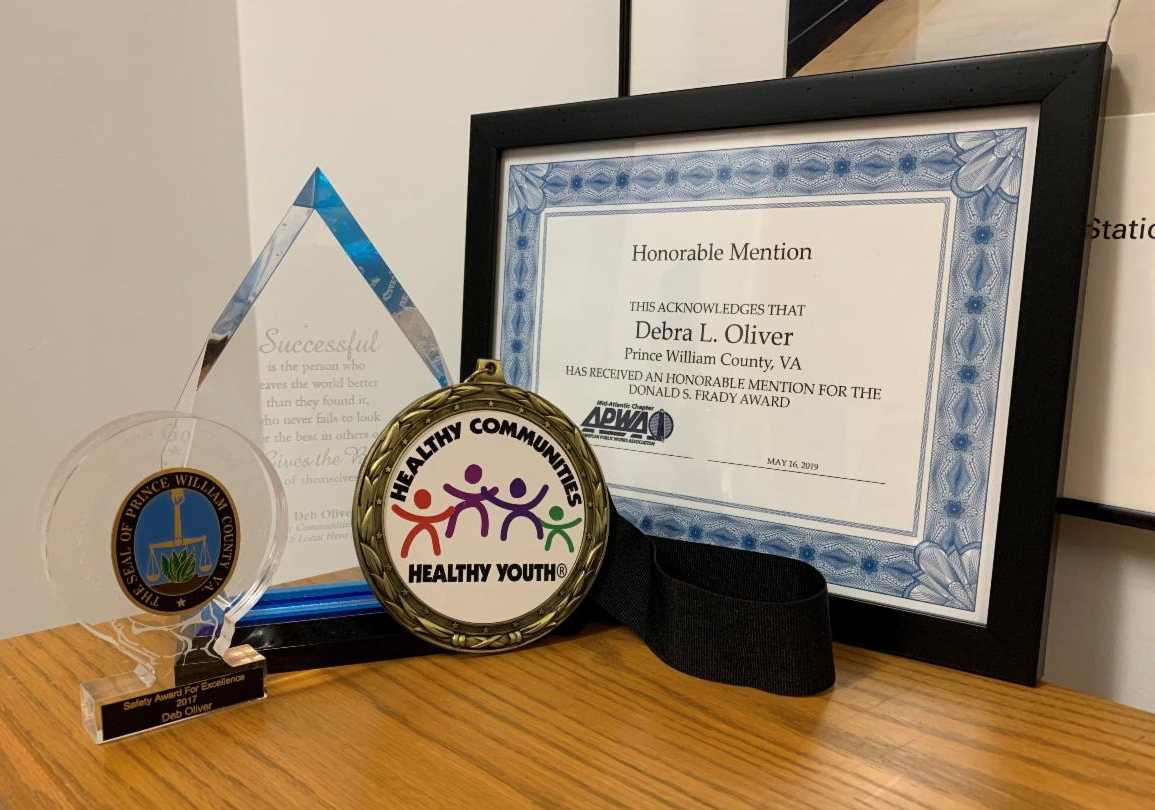 Communities Healthy Youth for her work with the Youth Ambassadors. Deb also managed a Public Works outreach event at a county school, which showcased the Department's impact on the community. Deb arranged activity booths for the students to complete activities related to the functions of the department. Furthermore, at the 2017 Mid-Atlantic Chapter Fredericksburg Road-E-O, Deb chaperoned kindergarten students touring the different competitions.
Deb always worked to help others. She personally organized a fundraiser within the department to help children in the County's foster program. The fundraiser raised over $2,000. She also organized a Toys for Tots Drive for the Public Works Department. After the terrible incident took place in the City of Virginia Beach, Deb organized a department bake sale fund raiser for the victims.
 Deb is passionate about preserving the environment. She led the department's efforts, in conjunction with the county's Risk Management Division, to achieve and maintain its Exemplary Environmental Enterprise (E3) certification with the Virginia Department Environmental Quality. This program led to the department's robust EMS (Environment Management System). In addition, Deb facilitated the creation of multiple standard operating procedures related to complying with environmental regulations. Furthermore, she worked closely with the Prince William Soil & Water Conservation District. Upon Deb's retirement as the Chapter Newsletter Editor, our Mid-Atlantic Chapter honored her by adopting an Emperor Tamarin through the National Wildlife Federation. This was a special recognition that she much appreciated. Deb is passionate about preserving the environment. She led the department's efforts, in conjunction with the county's Risk Management Division, to achieve and maintain its Exemplary Environmental Enterprise (E3) certification with the Virginia Department Environmental Quality. This program led to the department's robust EMS (Environment Management System). In addition, Deb facilitated the creation of multiple standard operating procedures related to complying with environmental regulations. Furthermore, she worked closely with the Prince William Soil & Water Conservation District. Upon Deb's retirement as the Chapter Newsletter Editor, our Mid-Atlantic Chapter honored her by adopting an Emperor Tamarin through the National Wildlife Federation. This was a special recognition that she much appreciated.
We wish Deb a rewarding retirement in El Paso, Texas and we know she will continue to be active in her new community.
THANK YOU, DEB FOR YOUR PUBLIC WORKS AND COMMUNITY LEADERSHIP!
|
|
Fairfax County Asset Management Virtual Webinar
Released by Fairfax County Government Communications Office
|
|  |
Shwan Fatah, PE, Chief, Projects and Assets Branch, Fairfax County Wastewater Collection Division, Department of Public Works and Environmental Services.
|  |
Shwan Fatah, PE, Chief, Projects and Assets Branch, Fairfax County Wastewater Collection Division (WCD), participated in a virtual webinar lunch-and-learn that was sponsored by the American Public Works Association and the Maryland Municipal League in October.
The theme of Fatah's presentation was, "Building Core Competency - Understanding and Implementing the Basics of Asset Management." The presentation included an overview of the wastewater system including the number of assets and complexity of the operation and management of the collection system.
Given the recent popularity of the term 'asset management' and the different 'takes' on the term, it was important to clearly state what asset management is to the Wastewater Management Program: "A collection of activities that lead to the efficient and optimized cost of operation of all assets and meets the desired level of service of the Board of Supervisors and system users. These activities include: maintain accurate inventory of assets; continual evaluation of assets; performing proactive maintenance to extend asset life; capital improvement to reduce system risk; maintenance; actively understanding and managing system risk; data management and governance; and creating opportunities for information sharing and efficiencies across business areas."
"The WCD Asset Management Program (AMP) includes various functions, including regulatory compliance, asset inspection, asset risk modeling and analysis, recommending assets for rehabilitation and renewal, maintenance schedule recommendations, improvements and sustainability practices," Fatah said. Additionally, he presented the Wastewater Collection Division's AMP road map from pre-2015 through 2020 and the plan for the next five years, the approach to risk framework development and analysis for linear (pipeline) and vertical (pumping stations) assets.
During his presentation, Fatah demonstrated various technology used within the program and the complexity of data management. Tools and technology are used by the AMP. One of the key tools, InfoAsset Planner, was discussed including its use and development along with examples of its risk analysis capabilities.
"Shwan, excellent job today at the Mid-Atlantic Chapter APWA seminar on asset management. You made us look good," said Juan Reyes, PE, Assistant Director, Public Works and Environmental Services, Fairfax County.
"Thanks again for being part of today's excellent lunch-and-learn," said Ken Eyre, P.E., APWA Mid-Atlantic Chapter Past-President and Principal, Blue Heron Leadership Group, LLC. "As you observed, the information shared was on point and meaningful, the questions were great, followed by your responses. I am sure some of the participants will follow up with you regarding additional insights and experiences," Eyre said. "And thanks for being so gracious to share this information. Networking like this is one of the rewards of being on the leading edge of asset management in public works."
|
By Judi Hines, Assistant Director of Public Works, City of Newport News
Attending PWX is an exciting and worthwhile educational opportunity, but we understand that it can be costly. With PWX@Home, you can provide your staff access to 252 educational sessions (that's 36 sessions for 7 different employees!) for the cost of one trip to PWX.
The PWX@Home Spotlight on Series works around your busy schedule. Choose one afternoon per month to set aside and embrace an all-new virtual learning experience. The second Tuesday of each month, APWA will host education in 12 key public works focus areas. The series features three education sessions each month on relevant topics-most of which were selected for PWX 2020 in varying formats to maximize learning and engagement. With the group discount, that's 7 staff experiencing 3 sessions for 12 months-a great deal!
Annual registration has been extended to April 1, 2021. For the programs in the annual series that have already been delivered, annual registrants will have immediate access to the recordings.
#PWXatHome on social media

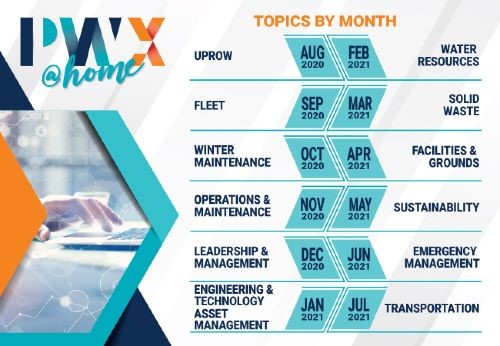
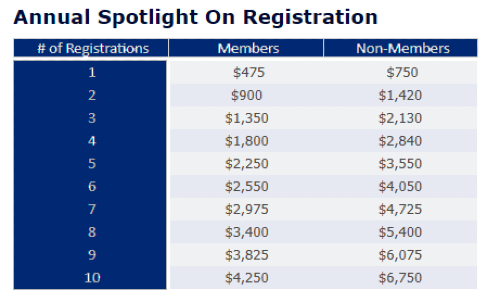
|
Mid-Atlantic Chapter Participated in Starting and Running a Public Works Academy
By Karen Self, City of Newport News, VA
|
|  | |
Chad Oxton, City of Suffolk, VA Public Works, Chair of Hampton Roads Public Works Academy
|  |
APWA hosted a live chapter forum about starting and running a public works academy. Four academies across the country were represented by five panelists and moderator.
- Connecticut Public Works Academy, Connecticut
- Grand Rapids Community College Public Works Academy, Michigan
- Hampton Roads Public Works Academy, Virginia
- Public Works Academy at Pinellas, Florida
Chad Oxton from Suffolk Public Works serves as the Chairperson for the Hampton Roads Public Works Academy and was one of the five panelists. A series of questions were asked of the panelists from how the academy was started; what age group it targets; how to find partners; how the curriculum was developed; what funding sources are available; to the sharing of success stories.
The Hampton Roads Public Works Academy has members from James City County to Virginia Beach. HRPWA was started in 1999 and has grown from servicing one vocational school to three. It targets high school juniors and seniors with a guaranteed paid internship between the students' junior and senior year at a member agency. The Mid-Atlantic Chapter has contributed financially to the HRPWA for over 20 years, and continues to support their educational pro-grams.
For the current workforce, HRPWA offers low cost to no cost professional development training to its dues-paying members. Karen Self from Newport News Public Works serves as the Vice Chairperson for HRWPA and was the moderator for the live forum. Karen also serves as the liaison with the Chapter's Board of Directors. This forum was part of PWX@Home during the month of November which was dedicated to operations and maintenance.
|
Fairfax County Response to Environmental and Public Health Emergency
Released by Fairfax County Government Communications Office
A project number (WW-000028-019) on a web page cannot describe the professionalism, work, effort and concern that goes into responding to an emergency sanitary sewer line break.
It happened on Monday, Sept 28, 2020, in the late afternoon near Burke View Court in Burke, Fairfax County, VA.
A sewer break was discovered by a resident in the area who reported a potential
 |
|  |
Fairfax County public works employees respond to an emergency sanitary sewer line break.
|
wastewater spill to the Trouble Response Center. Wastewater Management and Capital Facilities crews and contractors immediately deployed to the site and began installing a bypass pumping system to prevent raw sewage from entering a recreational pond owned by a nearby homeowner's association and to continue uninterrupted service for residents. The project will continue until the repair or replacement of the sewer pipe crossing the pond's forebay is complete, possibly through October.
Upon arrival at the site, crews discovered a damaged, 16-inch wastewater gravity sewer located within the forebay of a nearby farm pond. A dredging operation at the pond that was being performed by the homeowner's association-hired contractor apparently damaged the county sanitary sewer line, which caused raw sewage to be released into the forebay and the pond, a tributary to Pohick Creek.
A county contractor was dispatched to begin the repair work. The temporary bypass system was quickly installed and pumps wastewater from a manhole that is upstream from the damaged sewer line section. The homeowner's association members, under direction from county staff, tasked their contractor to drain the pond to enable repair work on the damaged sewer section to begin. Once the pond water level was lowered sufficiently the damaged section was isolated from the downstream and the upstream manholes. Not too long afterwards, a larger and more powerful bypass pump system was delivered to the site and quickly installed.
The system is monitored 24 hours a day. After the system was stabilized, the county mobilized an environmental clean-up company to handle any items that came out of the damaged section.
"This was a well-coordinated response to an emergency situation that shows the dedication and care that public works employees demonstrate for county residents every day," said Randy Bartlett, Director, Department of Public Works and Environmental Services.
The long-term goals of the project will provide sanitary sewer service to residents in the community for many years into the future.
"We will install new sanitary sewer manholes and piping to convey sewer flow through the community that will prevent sanitary sewer overflows into the stream, the forebay and the pond," said Matt Adams, Chief, Gravity Sewers Branch, Wastewater Collection Division. "This was definitely an environmental and public health emergency." Work on the permanent repairs started the next day and may take a few weeks to complete.
Through a Nextdoor posting made by the Office of Public Affairs, residents were advised to stay away from the pond and the stream. County agencies use messages on Nextdoor to alert residents of emergencies in their immediate neighborhoods. "We wanted to get a message out to the nearby neighbors to let them know we were on site, responding to the emergency and to warn them to stay away from the pond and the stream," Adams said.
The collection system impacted was in the Braddock District and Supervisor James Walkinshaw was alerted to the emergency which allows his staff to answer any questions from his constituents that may come into his office.
|
NEW Virginia Community Flood Preparedness Fund Under Development
By Denise Nelson, P.E., CFM, ENV SP, LEED AP
The guidelines determine how tens of millions of dollars in new resilience funding will be spent. Requests for proposal will be announced twice a year. Localities, PDCs, SWCDs, and tribal governments are eligible to apply. Funds must be used for flood prevention or protection or coastal resilience projects, planning, or studies. Priority will be giving to community-scale hazard mitigation activities that use nature-based solutions. In addition, 25% of the funds shall be used to serve low-income areas. Grant recipients must provide a cost-share (TBD).
If you don't have comments on the guidelines, you can start thinking about projects, plans, and studies for the first round of RFPs in April!
Denise Nelson is a member of the Mid-Atlantic Chapter Board. She is also active on the Chapter's Sustainability Committee and in promoting the Chapter's social media accounts. Denise is an Environmental Engineer providing environmental, sustainability, and resilience services at The Berkley Group, a local government consultant and planning firm.
|
Fairfax County Water Resources Monitoring Network
By Joe Sanchirico, Ecologist III, Stormwater Planning Division, Public Works and Environmental Services, Fairfax County.
|
|  | | A monitoring station in Fairfax County, VA |  |
With the release of the publication titled "Spatial and Temporal Patterns in Streamflow, Water Chemistry, and Aquatic Macroinvertebrates of Selected Streams in Fairfax County, Virginia, 2007-18", Fairfax County and the United States Geological Survey (USGS) have reached another milestone in their monitoring initiative that has been paying dividends for well over a decade.
In 2007, Fairfax County Stormwater Planning Division (SWPD) initiated an ambitious partnership with the USGS to create a Water Resources Monitoring Network. This study was designed to be an ongoing, long-term monitoring effort to describe current conditions and trends in both water quality (e.g. nutrients and sediment) and water quantity. A primary focus of the work is on evaluating the benefits of the projects implemented under the county's watershed improvement program.
The cooperative program includes the most data-rich urban monitoring network in the Chesapeake Bay watershed and is likely among the most advanced nationwide. The robust study design and state-of-the-art data collection and analysis enable Fairfax County ecologists to undertake an unprecedented evaluation of watershed scale responses to best management practices (BMP) implementation.
The monitoring network consists of five automated continuous water resources monitoring stations and fifteen less-intensely monitored sites. The first four automated stations were constructed in 2007 and achieved full operational capability in 2008. The fifth station became fully operational in the second quarter of 2013. Instruments at these stations collect stream flow data every five minutes and water quality (water temperature, pH, dissolved oxygen, specific conductance, and turbidity) data every 15 minutes; data are then transmitted via satellite and posted to a USGS web page hourly. These automated stations also capture storm event samples to be analyzed for sediment and nutrient concentrations. Additionally, samples are collected monthly at all twenty sites under various hydrologic conditions and analyzed for the same suite of constituents. Nutrient analyses are conducted by the Fairfax County Environmental Services Laboratory and the suspended sediment analyses are conducted by the USGS Eastern Region Sediment Laboratory.
Notable accomplishments so far include a report summarizing the data collected at the original 14-station network through the first five years of the study (2007-2012). This report includes calculations of annual nutrient and sediment loads (pounds/year) and yields (pounds/acre/year) from the four watershed stations equipped with fully automated (continuous monitoring) gages.
A second, two-phased analysis and reporting approach is underway to accomplish the objectives of this monitoring effort. Phase 1 is the release of this new report, consisting of expanded watershed characterization to include 5 additional years of data and 6 additional sites. The second report (being worked on now) will describe landscape changes and relations between those changes and in-stream responses. This will include watershed responses to the development of stormwater improvement projects.
The joint study has already proven to be a valuable resource in further understanding the specific watershed processes occurring in Fairfax County. It has provided the foundational data and infrastructure needed to initiate other studies conducted by USGS, as well as being the focus of presentations throughout the U.S. More information regarding data and associated publications can be found at the home page for this study.
This cooperative study is a progressive and unique effort to characterize conditions in urban and suburban streams. This study is expected to facilitate further understanding of watershed scale responses to management practices, which has yet to be accomplished by other studies in small, urban watersheds.
|
The Virginia Coastal Resilience Master Planning Framework (VCRMPF) Gives Us, Among Other Things, a Bunch of New Acronyms (BNA)!
By Denise Nelson, P.E., CFM, ENV SP, LEED AP
Following nearly two years of development, Virginia's Governor Northam released the Virginia Coastal Resilience Master Planning Framework (VCRMPF) outlining the state's principles and strategies for coastal flood resilience and adaptation. Prompted by VA Executive Order 24 (2018) and developed under the direction of the Governor's Special Assistant for Coastal Adaptation and Protection (SACAP), Rear Admiral Ann Phillips, the Framework presents an organized approach to developing a full Master Plan (anticipated in December 2021). The Virginia Coastal Resilience Master Plan (VCRMP) will improve the state's ability to anticipate, prepare for, respond to, and recover from more frequent and intense storms, increased nuisance flooding, and rising seas.
Virginia's coastal region covers nearly one quarter of the state and includes more than 10,000 miles of tidal waterfronts. This area includes major cities, military installations, and industries; rural farms, roads, and utilities; historic sites; and endangered habitats. The transportation systems in the coastal region support the movement of people and goods for the benefit of the entire state. The Framework development team looked to regional and national coastal resilience leaders for guidance and lessons learned, including Resilient DC and the Maryland Department of Natural Resources' Community Resilience Program.
The Framework names four primary goals for developing the Master Plan: identifying priority projects, establishing a financial strategy, incorporating climate change projections uniformly, and coordinating relevant entities and activities. The guiding principles include acknowledging and using climate science, developing an equitable approach, using nature-based solutions, seeking region-specific solutions, and focusing on cost-effective efforts.
The Framework includes chapters on Virginia's unique coastal challenges, climate science, regional resources and needs, state and federal resources, immediate and near-term actions, and financing the program. The immediate actions, which are already underway, include establishing a technical advisory committee (TAC), elevating the Virginia Coastal Zone Management Program (VCZMP) from the Department of Environmental Quality (DEQ) to report directly to the Governor's Secretary of Natural Resources, Matt Strickler (who is also the Chief Resilience Officer, CRO), and hold community engagement roundtables. The TAC includes representatives from the eight coastal planning district commissions (PDCs), directors of state departments, program leads at universities, and others.
In support of several PDCs, The Berkley Group was part of the deliberation to secure additional Coastal Zone Management funds from the federal government for regional resilience planning over the next three years. The PDCs began work providing member locality staff and other stakeholders education, a forum for engagement, and support in developing region-specific solutions in October 2020. Collaboration among PDCs streamlines the development of procedures and products and will lead to synergistic results for the most efficient and effective use of funds. Since resilience means different things to different communities and regions, the scope of work includes common tasks across PDCs and allows for PDCs to focus on local priority concerns (PDC-specific tasks). The common tasks include conducting stakeholder meetings; identifying resilience needs, priorities, and projects; supporting a state-wide database of projects, and supporting the development of the Master Plan. In general, each task will be worked on in each year to initiate, fully develop, and then implement the tasks. While each PDC is at a different starting point, they are all excited to engage member localities and relevant stakeholders to improve resilience to the various sources of coastal flooding, and, eventually, to a wide range of environmental, social, and economic challenges.
Over the next year, the state will host TAC and community engagement meetings to address the Framework goals, actions, and outcomes and create the Virginia Coastal Resilience Master Plan. Please engage at the local, regional, and/or state level, and stay tuned on the progress, opportunities, and success of the program.
Denise Nelson is a member of the Mid-Atlantic Chapter Board. She is also active on the Chapter's Sustainability Committee and in promoting the Chapter's social media accounts. Denise is an Environmental Engineer providing environmental, sustainability, and resilience services at The Berkley Group, a local government consultant and planning firm.
|
Caldwell Publishes Article
|
|  | |
Eric Caldwell, Assistant Construction Project Manager, Public Works and Environmental Services, Fairfax County, VA
|  |
Eric Caldwell, Assistant Construction Project Manager, Maintenance and Stormwater Management (MSMD), wrote an article for the Autumn 2020 Worldwater Stormwater Management magazine published by the Water Environment Federation Stormwater Institute entitled "Facility Maintenance Transitions from Reactive to Proactive."
The introduction to the article reads, "Geographic information systems (GIS) help stormwater facility staff use risk assessment and predictive analytics to optimize maintenance scheduling. Eric Caldwell explains how the Fairfax County Stormwater Management team used ArcGIS data analysis to develop a maintenance predictive analytics tool to help better forecast maintenance scheduling." The article is on page 25 of the magazine.
"Take a moment to click on the link and navigate to page 25," said Karlee Copeland, Chief, Stormwater Management Branch, MSMD. "Eric was scheduled to present at WEFTEC, but upon cancellation of the event, he decided to condense his presentation into an article instead. We are so proud of the work Eric does for Fairfax County," she said.
|
Prince William County Almost Triples Ability to Recycle Organic Waste
Freestate Farms opens advanced aerobic composting system at Balls Ford Road facility
By Deborah K. Campbell, Department of Public Works, Solid Waste Division, Prince William County
Prince William, VA, September 18, 2020 - An expansion at the Balls Ford Road Composting Facility has nearly tripled its capacity to produce compost. In addition to yard waste, the facility can now recycle food waste using state-of-the-art equipment and processes.
The expansion of the facility, which was established in 1994, is a public-private
 |
|  |
Aerial view of new Balls Ford Yard Waste Compost Facility
|
partnership between Freestate Farms and Prince William County. Under the agreement, Freestate Farms, which has operated the facility since 2015, financed and expanded the operation without using any County funding. The County will pay Freestate Farms for the amount of organic waste it brings to the site; Freestate Farms will recycle the material and sell the resulting high-quality compost that can help improve soil health and productivity as well as reduce water use and pollution.
Facility Capabilities
Prince William Board of County Supervisors Chair Ann Wheeler attended the ribbon-
|
|  | |
Ribbon cutting in front of the Freestate Farms processing facility. Pictured: Prince William Board of County Supervisors Chair-At-Large Ann Wheeler; Occoquan District Supervisor Kenny Boddye; Deputy County Executive Rebecca Horner; Assistant Director of Public Works for Solid Waste/Acting Director Public Works Tom Smith; Brentsville District Supervisor Jeanine Lawson; and Freestate owners, Denton Baldwin and Doug Ross
|  |
cutting ceremony to celebrate the facility's opening and said that she has driven by it in the past and was excited to see the new additions. "I think this is really wonderful, to come back here now and see all these buildings. The future of our County is just absolutely wonderful. I really am grateful for this facility because ... the EPA tells us that 30 percent of waste in landfills is food and yard waste."
Brentsville District Supervisor Jeanine Lawson added, "I am glad to have this facility, which is one of very few in the region or across the country. It is exciting for us, in Prince William County, to be a leader with this compost facility in the region."
Turning yard and food waste into compost at the facility will keep tons of this material out of the landfill. According to Acting Director of Public Works Tom Smith, "About 30 percent of the waste going into the landfill was organic, primarily yard waste, leaves, grass, brush and food waste. We saw this as a great opportunity to expand the program for organic processing to increase the life of the County landfill. It's part of our work to recycle more, be more sustainable, to take more material that previously went into the landfill and make usable soil amendments to improve our environment."
Processing at the New Facility
The process at the facility includes shredding waste, removing plastics and other non-organic material on a sorting line, and processing the resulting organic material in large concrete bins that controls air flow to increase the speed of the composting process as well as control any odors.
In the past, yard waste was processed in long windrows that had to be periodically turned over, using heavy construction equipment. That process could take up to nine months. The new process will get the job done in less than three months.
With the new construction complete, the composting facility will be able to process more than 80,000 tons of waste per year, as compared to roughly 30,000 tons per year that it processed in the past.
Who Can Use the Facility?
Other jurisdictions can use the composting facility and pay Freestate Farms to take their waste. Smith said, "This is a regional facility. We're working with Fairfax, Arlington and Alexandria. This is a facility for the region. Being right off I-66 it's very easy to get trucks in and out of the facility."
The facility is open to all residents, businesses and institutions in the County and region who can separate organic waste. Grocery stores, food processors, restaurants and cafeterias typically generate larger amounts of food waste and need a way to divert this material from landfills.
The facility will decrease methane emissions. Douglas Ross, Freestate Farms CEO, said "We built a facility that would create high-quality compost while also minimizing the region's and our own environmental footprint. Because of compost's organic qualities, its use has powerful benefits in everything from backyard plant and vegetable gardens to green roof construction, sports turf management, and regional soil erosion and sediment control projects."
|
Social Equity and Environmental Justice: What does it Mean for Public Works?
By Celeste Murphy Greene, Ph.D., MPA
Today, more than ever, it is important for people in the workplace to understand the meaning of social equity and environmental justice in order to address these issues. "Social Equity is about fairness, right, justice, and freedom from the effects of bias...It is a pragmatic condition that describes access to, distribution of, and outcome related to public goods" (Guy & McCandless, 2020). Often, the term equality and equity are used interchangeably, but the two terms have different meanings. The picture below helps illustrate the difference between the two.
The illustration highlights in the first picture how equality does not always meet the needs of individual community members by providing the same resources or service to all individuals. The second illustration demonstrates how when the needs of the individual are taken into consideration, the resources meet those needs.
The term environmental justice has been around since the early 1990s, but has not made into the mainstream of societal discussions until recently. The definition of environmental justice is:
- The fair treatment and meaningful involvement of all people regardless of race, color, national origin, or income with respect to the development, implementation, and enforcement of environmental laws, regulations, and policies.
- Fair treatment means that no group of people, including racial, ethnic, or socioeconomic group should bear a disproportionate share of the negative environmental consequences resulting from industrial, municipal, and commercial operations or the execution of federal, state, local and tribal programs and policies (U.S. EPA, 1998).
The three focus areas of environmental justice are:
1) The distribution of the effect of environmental problems
2) The environmental policy making process
3) The administration of environmental protection programs
The picture below helps illustrate the difference between equality, equity, and justice.
As the illustration reveals, by removing the wooden fence and replacing it with a different type of material, the barrier blocking the view of soccer game no longer exists and as a result, the audience members no longer need extra accommodation to see the game.
What does this mean for public works?
In order to better address issues of social equity environmental justice in public works here are several steps that may help:
- Work to integrate environmental justice and social equity into public works policies and practices
- Engage community members in public meetings pertaining to public works projects impacting vulnerable communities
- Seek input from community members in various way: focus groups, surveys, phone calls
- Ensure policies are formulated and implemented equitably
The Case of the Street Lights
A good example of putting social equity into practice is highlighted in the case of the streetlights in a community in the Pacific Northwest. This community had a neighborhood that experienced a consistently higher than average crime rate, compared to other neighborhoods in that community. It came to the attention of the public works department that the neighborhood had several streetlights that simply needed bulbs replaced. After some initial research, it was discovered that the community was a lower income community, with a high percentage of minorities. It was also uncovered that this community did not report when streetlights went out, as did other communities, with lower crime rates. The public works department decided to take a more proactive approach and monitor when streetlights would go out throughout the city, instead of the previously reactive approach of waiting for a resident to contact the department and report the outage. This approach solved the issue for this neighborhood and had a positive impact on the crime rate. This case exemplifies how social equity was put into use by public works to help communities.
About the Author
Dr. Celeste Murphy Greene is currently the Program Director and Associate Professor of the online Graduate Certificates in Public Administration and Leadership at the University of Virginia's School of Continuing and Professional Studies. Dr. Greene teaches courses in public policy and environmental policy with a specialization in environmental justice. Her work has appeared in Public Administration Review, Review of Policy Research and other academic journals and books. She has an upcoming article in the Journal of Emergency Management. For more information please visit: www.celestemurphygreene.com
|
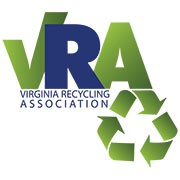
Virginia Recycling Association Announces Four Board Members and Names New Board Leadership
By Sarah Caldwell, Association Manager, Virginia Recycling Association
New members will enhance board's focus on raising the voice of recycling in Virginia and help the VRA strengthen access to information, communication, and education for the public and among professionals, organizations and government agencies.
RADFORD VA - The Virginia Recycling Association (VRA) today announced four new board members and a new board chair who will each help support the nonprofit's work to raise the voice of recycling in Virginia.
"We're excited to expand our board with four new members who will bring diverse expertise and insight to our work," said VRA vice president Teresa Sweeney. "We have worked diligently to ensure VRA's board and leadership represents a variety of experts from business, government, and education, and the newest board members have the energy, insight and expertise to take our organization to the next level."
The VRA also chose City of Manassas Refuse and Recycling Coordinator Monica Boehringer as its new president. Boehringer has served on the VRA board since 2018 and most recently was the board's vice president.
"I am personally delighted to welcome such a strong group of new board members, and I look forward to serving with each of them in the coming year," said Teresa Sweeney, immediate past president of the VRA. "I'm also very pleased that Monica Boehringer will lead the next chapter of our work in her new role as president. Monica has demonstrated exceptional commitment to advancing VRA's mission, and we're looking forward to her leadership."
The new board members began their three-year terms with VRA effective September 1, 2020 and can serve a maximum of two terms. The four new board members are:
- Christine McCoy - Christine is currently a Management Analyst II for Fairfax County where she is responsible for program development and outreach and education. Christine previously served as a board member for the National Recycling Coalition and the Virginia Recycling Association.
- Robert Waschler - Robert is currently the General Manager of GFL Environmental (Waste Industries) where he serves GFL's Wytheville and Christiansburg locations. Robert is also a member of the National Waste and Recycling Association, Virginia Waste Industries Association, and a member of the Southwest Virginia Solid Waste Management Association.
- Kevin Drumm - Kevin is an Inside Buyer at the Sims Recycling center located in Tabb, VA. For the past six years he has established many business relationships with members of the community and has over 20 years of experience in Business Management related to the Construction and Manufacturing industry.
- Billy Basham - Billy is the Enon Drive General Manager for Recycling Disposal Solutions (RDS). He has over 12 years of experience in solid waste management with the City of Roanoke and excels in information and data analysis, contract management, vendor relations, budgeting and financial analysis, as well as process improvements (LEAN certified). Billy is also a member of the Southwest Virginia Solid Waste Management Association (SVSWMA).
Boehringer added, "On behalf of the board, I want to express our gratitude to Erica Carter, Fred Cornell, and Kristi Rines who have concluded their service as valued board members.
About the Virginia Recycling Association The Virginia Recycling Association (VRA) provides leadership in sustainable recycling and resource management in Virginia. VRA is the leading resource of recycling information for our members, the general public, the Virginia General Assembly, local government, business, and industry. For more information visit our web page.
|
Volunteer for a National Committee, Council or Task Force:
Become an Active Member of APWA TODAY!
Members interested in giving back to the profession by volunteering their time and sharing their knowledge are invited to submit a nomination to be considered for appointment to an APWA National committee, council, or task force. The committee nominations process is open until March 22. Details regarding the committees, positions, goals, and expectations of participants and how to nominate yourself or a colleague can be found HERE
|
|
Be Counted!!
Is your membership information up to date? Please update your
|
|
Chapter Welcomes New Members!
|
|
|
|
|